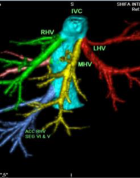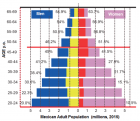Abstract
Research Article
Anti-anxiety effects in mice following acute administration of Ficus Thonningii (wild fig)
Aduema W*, Akunneh-Wariso C, Ejiofo DC and Amah AK
Published: 11 September, 2018 | Volume 2 - Issue 1 | Pages: 040-047
The effect of acute administration of ethanol extract of F. thoningii on anxiety and fear in Swiss white mice was studied. 30 adult Swiss white mice of both sexes were randomly divided in to three groups of 10 mice each. Group1 served as the control and was administered normal saline only. Group 2 (low dose group) was administered 10mg/kg ethanol extract of the F. thoningii, while group 3 (high dose group) was given 20mg/kg of the same extract. All animals were allowed food and water ad libitum. Neurobehavioral parameter was assessed using the light/dark transition box. The analysis of variance (ANOVA) was used to test for variability within and among groups. Results were expressed as Mean ±SEM (standard error of the mean) and probability level p<0.05 was accepted as significant. The result showed that the frequency of transition in the light/dark transition box was significantly increased in the test groups (p<0.05; p<0.01).Similarly, the Light Box Duration was also significantly increased (p<0.01) in the low and high dose groups respectively. However, the Dark box duration was significantly decreased (p<0.05; p<0.01) in the low and high dose groups compared to control. This index showed a decreased level of anxiety and fear in the test groups. This was followed by a corresponding trend of decreased frequency of stretch attend posture and duration of freezing in the light/dark transition box (p<0.01; p<0.001) compared to the control. Summarily, acute administration of ethanol extract of F. thonningii causes calmness and sedation in moderate and high doses. It is therefore likely that it reduces aggression. If the result from this finding is extrapolated to humans, F. thoningii could be used to reduce anxiety disorders.
Read Full Article HTML DOI: 10.29328/journal.ida.1001009 Cite this Article Read Full Article PDF
Keywords:
Ficus thoningii; Swiss white mice; Light/dark transition box; anxiety
References
- Ajayi AO. Antimicrobial nature and use of some medicinal plants in Nigeria. African Journal of Biotechnology 2008; 7: 595-599. Ref.: https://goo.gl/yDL3F6
- Usman H, Abdulrahman FI, Usman A. Qualitative phytochemical screening and in vitro antimicrobial effects of methanol stem bark extract of Ficusthonningii (Moraceae) AJTCAM. 2009; 6: 289–295. Ref.: https://goo.gl/svYm8s
- Orwa C, Mutua A, Kindt R, Anthony S. Agroforestree database: a tree reference and selection guide. 2009; Ref.: https://goo.gl/vzYkXY
- Agroforestry Tree Database. 2011; : https://goo.gl/2j4GRd
- Hines DA, Eckman K. Indigenous multipurpose trees of Tanzania Uses and economic benefits for people. FAO Corporate document repository. 1993; Ref.: https://goo.gl/33kXX9
- Hyde MA, Wursten B. 2011 Flora of Zimbabwe. Ref.: https://goo.gl/vx4fLf
- Schmidt E, Lutter M, McCleland W. Trees and shrubs of Mpumalanga and Kruger National Park. Jacana, South Africa. 2002; 80 Ref.: https://goo.gl/SdzCy6
- Danthu P, Solovier P, Gaye A, Sarr A, Seck M, et al. Vegetative propagation of some West African Ficus species by cuttings. Agroforestry Systems 2002; 55: 57-63. Ref.: https://goo.gl/4b5KrW
- Beglinger C. Overview: cholecystokinin and eating. Current Opinion in Investigational Drugs. 2002; 3: 587-588. Ref.: https://goo.gl/knjoau
- Burrows J, Burrows S. Figureures of Southern and South-Central Africa, Umdaus Press. Hatfield, South Africa. 2003; 62-100. Ref.: https://goo.gl/vUQGcs
- Tegbe TSB, Adeyinka IA, Baye KD, Alawa JP. Evaluation of feeding graded levels of dried and milled Ficusthonningii leaves on growth performance, carcass characteristics and organ of weaner rabbits. Pakistan J Nutr 2006; 5: 548–550. Ref.: https://goo.gl/Ds8ErU
- Jansen O, Angenot L, Tits M, Nicolas JP, De Mol P, et al. Evaluation of 13 selected medicinal plants from Burkina Faso for their antiplasmodial properties. J Ethnophamacol. 2010; 13: 143–150. Ref.: https://goo.gl/VRiXrJ
- Titanji VPK, Zofou D, Ngemenya MN. The antimalarial potential of medicinal plants used for the treatment of malaria in Cameroonian folk medicine. AJTCAM. 2008; 5: 302–321. Ref.: https://goo.gl/BbX9Nm
- Bamikole MA, Ikhatua UJ. Nutritional evaluation of Ficus thonningii-Panicum maximum mixtures in West African dwarf goats. Nutrition and Food Science. 2010; 40: 280–288. Ref.: https://goo.gl/uCkQ83
- Igoli JO, Tor-Anyin TA, Usman SS, Oluma HOA, Igoli NP. Folk medicines of the Beneu valley of Nigeria. In: Singh VK, Govil JN, Hashim S, Sing G, 2002. Recent progress in Medicinal plants, Ethnomedicine and Pharmacognosy. Raleigh, NC: Science Technology Publishers. 2010; 327–338. Ref.: https://goo.gl/BGLmpi
- Mathieu G, Meissa D. Traditional leafy vegetables in Senegal. Diversity and medicinal uses. AJTCAM. 2007; 4: 469–475. Ref.: https://goo.gl/ZwTDmi
- Acamovic T, Brooker JD. Biochemistry of plant secondary metabolites and their effects in animals. Proceedings of the Nutrition Society. 2005; 64: 403-412. Ref.: https://goo.gl/hV7wrf
- Cowan MM. Plant products as antimicrobial agents. Clinical Microbiology Review 1999: 12: 564-582. Ref.: https://goo.gl/qe6xBg
- Ahur VM, Madubunyi I, Adenkola AY, Udem SC. The effect of acetyl acetate extract of Ficus thonningii (Blume) leaves on erythrocyte osmotic fragility and hematological parameters in acetaminophen-treated rats. Com Clin Pathol. 2010; 10: 1107–1111. Ref.:
- Cryan JF, Mombereau C. In search of a depressed mouse: utility of models for studying depression-related behaviour in genetically modified mice. Molecular Psychiatry. 2004; 9: 326-357. Ref.: https://goo.gl/4VUynB
- Nilson R. A qualitative and quantitative risk assessment of snuff dipping. Regulatory Toxicology and Pharmacology. 1998; 28: 1-16. Ref.: https://goo.gl/dmDPrA
- Osim EE. Neurophysiology. Calabar. University of Calabar Press. 2008; 24-27.
- Aduema W, Munach I, Akunneh-Wariso C. Effect of Ethanol Extract of Nymphaea lotus (Water Lily) on fear and anxiety Behavior in mice. Annals of Clinical and Laboratory Research. 2018; 6: 223. Ref.: https://goo.gl/jVfhML
- Adolphs R, Gasselin F, Buchanan TW, Tranel D, Scgyns P, et al. A Mechanism for impaired fear recognition after amygdala damage. Nature. 2005; 433: 68 -72. Ref.: https://goo.gl/DNRAek
Figures:
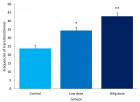
Figure 1
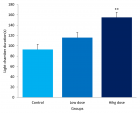
Figure 2
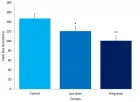
Figure 3
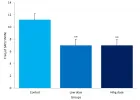
Figure 4

Figure 5

Figure 6
Similar Articles
-
Burnout and Related Factors in Caregivers of outpatients with SchizophreniaHatice Demirbas*,Erguvan Tugba Ozel Kizil. Burnout and Related Factors in Caregivers of outpatients with Schizophrenia. . 2017 doi: 10.29328/journal.hda.1001001; 1: 001-011
-
Anxiety and depression as an effect of birth order or being an only child: Results of an internet survey in Poland and GermanyJochen Hardt*,Lisa Weyer,Malgorzata Dragan,Wilfried Laubach. Anxiety and depression as an effect of birth order or being an only child: Results of an internet survey in Poland and Germany. . 2017 doi: 10.29328/journal.hda.1001003; 1: 015-022
-
Vestibular-limbic relationships: Brain mappingPaolo Gamba*. Vestibular-limbic relationships: Brain mapping. . 2018 doi: 10.29328/journal.ida.1001006; 2: 007-013
-
Responding to Disasters: More than economic and infrastructure interventionsDavid Crompton OAM*,Ross Young,Jane Shakespeare-Finch,Beverley Raphael AM. Responding to Disasters: More than economic and infrastructure interventions. . 2018 doi: 10.29328/journal.ida.1001007; 2: 014-028
-
Anti-anxiety effects in mice following acute administration of Ficus Thonningii (wild fig)Aduema W*,Akunneh-Wariso C,Ejiofo DC,Amah AK. Anti-anxiety effects in mice following acute administration of Ficus Thonningii (wild fig). . 2018 doi: 10.29328/journal.ida.1001009; 2: 040-047
-
Translation, adaptation and validation of Depression, Anxiety and Stress Scale in UrduWaqar Husain*,Amir Gulzar. Translation, adaptation and validation of Depression, Anxiety and Stress Scale in Urdu. . 2020 doi: 10.29328/journal.ida.1001011; 4: 001-004
-
Depression as a civilization-deformed adaptation and defence mechanismBohdan Wasilewski*,Olha Yourtsenyuk,Eugene Egan. Depression as a civilization-deformed adaptation and defence mechanism. . 2020 doi: 10.29328/journal.ida.1001013; 4: 008-011
-
The different levels of depression and anxiety among Pakistani professionalsSehrish Hassan*,Waqar Husain. The different levels of depression and anxiety among Pakistani professionals. . 2020 doi: 10.29328/journal.ida.1001014; 4: 012-018
-
Impact of Christian meditation and biofeedback on the mental health of graduate students in seminary: A pilot studyPaul Ratanasiripong*,Sun Tsai . Impact of Christian meditation and biofeedback on the mental health of graduate students in seminary: A pilot study. . 2020 doi: 10.29328/journal.ida.1001015; 4: 019-024
-
Therapeutic application of herbal essential oil and its bioactive compounds as complementary and alternative medicine in cardiovascular-associated diseasesAhmad Firdaus B Lajis*,Noor Hanis Ismail. Therapeutic application of herbal essential oil and its bioactive compounds as complementary and alternative medicine in cardiovascular-associated diseases. . 2020 doi: 10.29328/journal.ida.1001016; 4: 025-036
Recently Viewed
-
Metastatic Brain Melanoma: A Rare Case with Review of LiteratureNeha Singh,Gaurav Raj,Akshay Kumar,Deepak Kumar Singh,Shivansh Dixit,Kaustubh Gupta*. Metastatic Brain Melanoma: A Rare Case with Review of Literature. J Radiol Oncol. 2025: doi: 10.29328/journal.jro.1001080; 9: 050-053
-
Validation of Prognostic Scores for Attempted Vaginal Delivery in Scar UterusMouiman Soukaina*,Mourran Oumaima,Etber Amina,Zeraidi Najia,Slaoui Aziz,Baydada Aziz. Validation of Prognostic Scores for Attempted Vaginal Delivery in Scar Uterus. Clin J Obstet Gynecol. 2025: doi: 10.29328/journal.cjog.1001185; 8: 023-029
-
Scientific Analysis of Eucharistic Miracles: Importance of a Standardization in EvaluationKelly Kearse*,Frank Ligaj. Scientific Analysis of Eucharistic Miracles: Importance of a Standardization in Evaluation. J Forensic Sci Res. 2024: doi: 10.29328/journal.jfsr.1001068; 8: 078-088
-
A study of coagulation profile in patients with cancer in a tertiary care hospitalGaurav Khichariya,Manjula K*,Subhashish Das,Kalyani R. A study of coagulation profile in patients with cancer in a tertiary care hospital. J Hematol Clin Res. 2021: doi: 10.29328/journal.jhcr.1001015; 5: 001-003
-
Additional Gold Recovery from Tailing Waste By Ion Exchange ResinsAshrapov UT*, Malikov Sh R, Erdanov MN, Mirzaev BB. Additional Gold Recovery from Tailing Waste By Ion Exchange Resins. Int J Phys Res Appl. 2024: doi: 10.29328/journal.ijpra.1001098; 7: 132-138
Most Viewed
-
Evaluation of Biostimulants Based on Recovered Protein Hydrolysates from Animal By-products as Plant Growth EnhancersH Pérez-Aguilar*, M Lacruz-Asaro, F Arán-Ais. Evaluation of Biostimulants Based on Recovered Protein Hydrolysates from Animal By-products as Plant Growth Enhancers. J Plant Sci Phytopathol. 2023 doi: 10.29328/journal.jpsp.1001104; 7: 042-047
-
Sinonasal Myxoma Extending into the Orbit in a 4-Year Old: A Case PresentationJulian A Purrinos*, Ramzi Younis. Sinonasal Myxoma Extending into the Orbit in a 4-Year Old: A Case Presentation. Arch Case Rep. 2024 doi: 10.29328/journal.acr.1001099; 8: 075-077
-
Feasibility study of magnetic sensing for detecting single-neuron action potentialsDenis Tonini,Kai Wu,Renata Saha,Jian-Ping Wang*. Feasibility study of magnetic sensing for detecting single-neuron action potentials. Ann Biomed Sci Eng. 2022 doi: 10.29328/journal.abse.1001018; 6: 019-029
-
Pediatric Dysgerminoma: Unveiling a Rare Ovarian TumorFaten Limaiem*, Khalil Saffar, Ahmed Halouani. Pediatric Dysgerminoma: Unveiling a Rare Ovarian Tumor. Arch Case Rep. 2024 doi: 10.29328/journal.acr.1001087; 8: 010-013
-
Physical activity can change the physiological and psychological circumstances during COVID-19 pandemic: A narrative reviewKhashayar Maroufi*. Physical activity can change the physiological and psychological circumstances during COVID-19 pandemic: A narrative review. J Sports Med Ther. 2021 doi: 10.29328/journal.jsmt.1001051; 6: 001-007

HSPI: We're glad you're here. Please click "create a new Query" if you are a new visitor to our website and need further information from us.
If you are already a member of our network and need to keep track of any developments regarding a question you have already submitted, click "take me to my Query."









